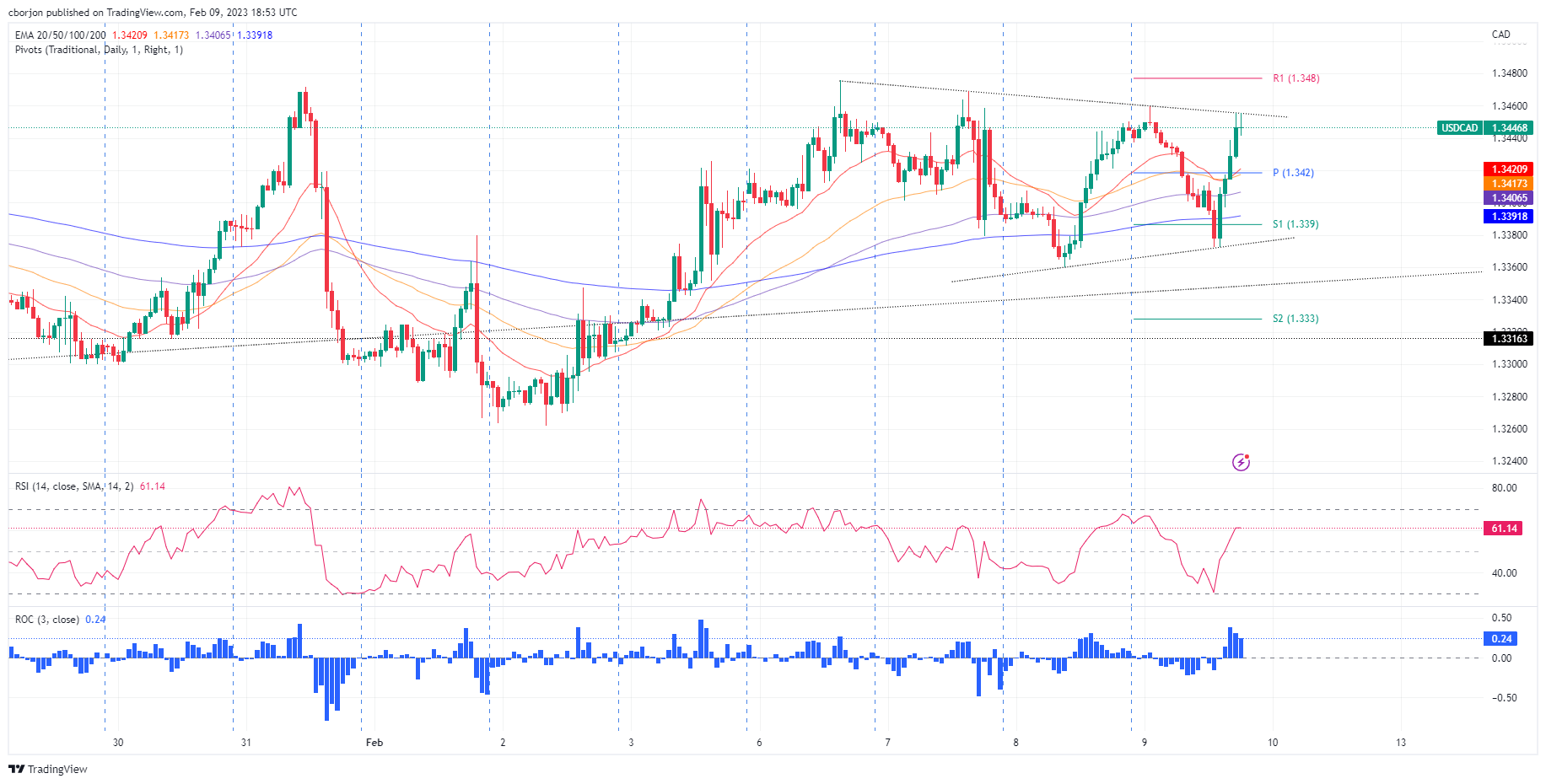USD/CAD Price Analysis: Ascending triangle in the hourly, to pave bulls way to 1.3500
- USD/CAD is trading sideways, though in the short term, it is tilted upwards.
- Near-term, the USD/CAD is upward biased as an ascending triangle emerges.
USD/CAD grinds higher during the North American session, erasing its earlier losses that witnessed the pair dropping to its low of the day at 1.3372. However, a late bounce in the New York session spurred an upward reaction, with the USD/CAD pair almost unchanged. At the time of writing, the USD/CAD exchanges hands at 1.3448.
From a daily chart perspective, the USD/CAD remains neutral to upward biased, though the intersection of several support/resistance trendlines and the presence of the 50/100/20-day Exponential Moving Averages (EMAs) around 1.3402-1.3441 keep the USD/CAD trendless.
Nevertheless, although flat, the Relative Strength Index (RSI) is in bullish territory, keeping buyers hopeful for higher prices. On the other hand, the Rate of Change (RoC) suggests the USD/CAD might consolidate further, as it sits almost flat.
Upwards, the USD/CAD needs to clear the weekly high at 1.3475, which, once cleared, will exacerbate a leg-up toward 1.3500. on the flip side, the USD/CAD needs to break 1.3359, the weekly low, to challenge the psychological 1.3300 figure.
Short term, the USD/CAD one-hour chart suggests the pair as neutral-upwards. An ascendant triangle has formed, which, once cleared, the USD/CAD might rally towards its measured target objective at 1.3560/70.
USD/CAD One-hour chart

USD/CAD technical levels
